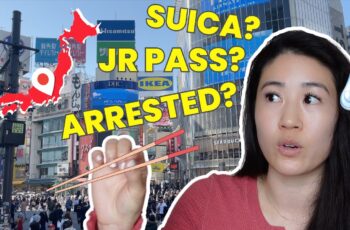Tokyo Temptations: Unveiling the Top 10 Unforgettable Experiences in Japan’s Dynamic Capital
Tokyo, a sprawling, effervescent metropolis, is a city that defies easy definition. It’s a place where ancient traditions harmoniously coexist with cutting-edge technology, where serene temples offer respite from the dazzling neon glow of futuristic cityscapes, and where culinary artistry reaches unparalleled heights. Navigating this vast urban landscape can seem daunting, but beneath the surface lies a tapestry of experiences waiting to be discovered. This guide will delve into ten quintessential activities that offer a profound glimpse into the soul of Tokyo, ensuring your visit is nothing short of extraordinary. From iconic landmarks to hidden cultural gems, prepare to be captivated by the multifaceted charm of Japan’s capital.
1. Witness the Organized Chaos of Shibuya Crossing & Explore its Trendsetting Environs
No trip to Tokyo is complete without experiencing the iconic Shibuya Crossing. Often dubbed the world’s busiest pedestrian intersection, it’s a mesmerizing spectacle of humanity in motion. When the traffic lights turn red, vehicles halt in all directions, and a torrent of people – sometimes thousands at once – surges into the intersection from every corner, miraculously avoiding collisions. It’s a symphony of synchronized movement, a testament to Tokyo’s incredible efficiency and the sheer scale of its population.
What to Do:
-
Cross the Scramble: Don’t just watch it; be part of it! The thrill of being swept along with the crowd is a uniquely Tokyo experience.
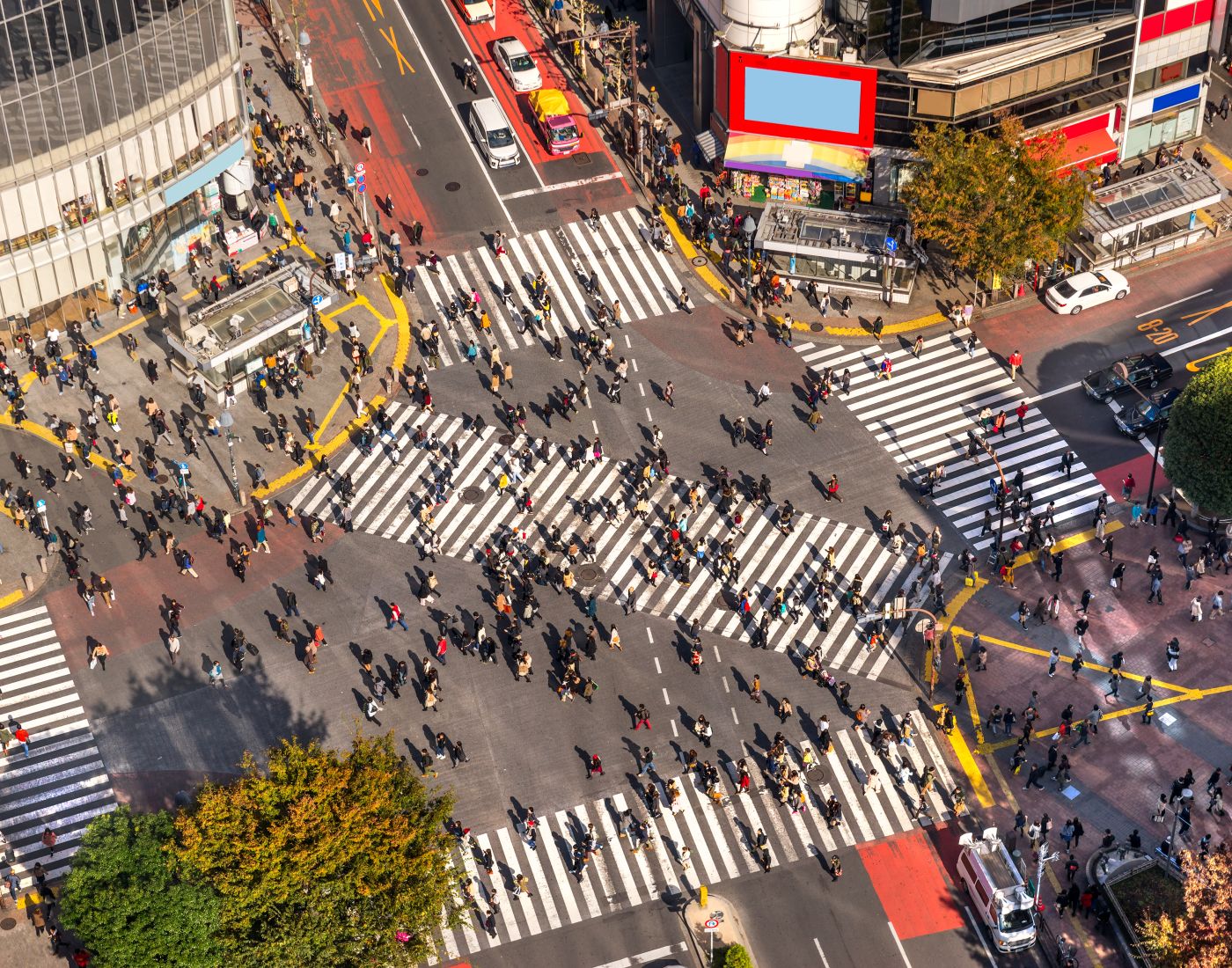
-
Best Viewing Spots: For a bird’s-eye view, head to the Starbucks on the second floor of the QFRONT building (though it can be crowded). Another excellent vantage point is the L’Occitane Café, offering a slightly more relaxed atmosphere. The Magnet by Shibuya 109 rooftop “Mag’s Park” also provides a fantastic, less congested perspective.
-
Hachiko Statue: Pay respects to Japan’s most loyal dog at the Hachiko Statue, located just outside Shibuya Station’s Hachiko Exit. This beloved Akita waited for his deceased master at the station every day for nearly a decade, becoming a national symbol of fidelity. It’s a popular meeting spot and a poignant reminder of enduring loyalty.
-
Shibuya 109: Dive into the heart of Japanese youth fashion at Shibuya 109, a cylindrical tower packed with boutiques catering to the latest “gyaru” (gal) trends. Even if you don’t buy anything, it’s a fascinating cultural immersion.
-
Explore Surrounding Streets: Wander through Center Gai, a pedestrian-only street teeming with shops, restaurants, and game arcades. Discover smaller lanes branching off, filled with unique boutiques, record stores, and cozy cafes. Shibuya is a hub for music, fashion, and art, constantly evolving and setting new trends.
Why it’s Top 10: Shibuya Crossing is the quintessential image of modern Tokyo – vibrant, energetic, and overwhelmingly alive. It perfectly encapsulates the city’s dynamic pulse and is an unmissable, almost theatrical, urban spectacle.
2. Step Back in Time at Sensō-ji Temple in Asakusa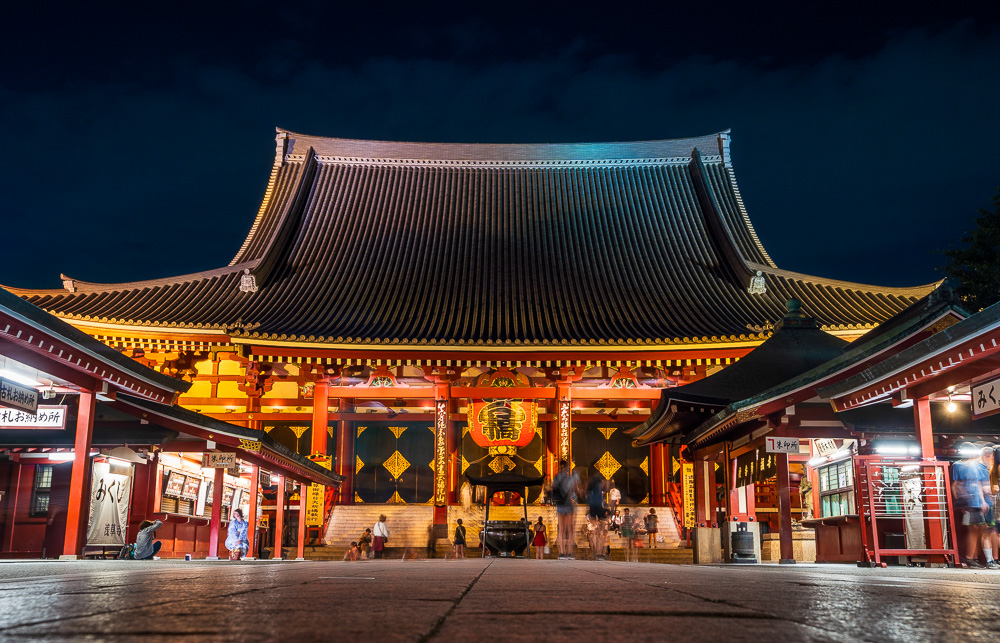
Escape the ultra-modern and immerse yourself in old Tokyo with a visit to Sensō-ji, the city’s oldest and one of its most significant Buddhist temples. Located in the historic Asakusa district, Sensō-ji offers a vibrant and spiritual experience, a striking contrast to the sleek skyscrapers elsewhere. Founded in 645 AD, the temple is dedicated to Kannon Bosatsu, the Bodhisattva of compassion.
What to Do:
-
Kaminarimon (Thunder Gate): Enter through the imposing Kaminarimon, with its massive red paper lantern (chochin) and fierce guardian statues of Raijin (god of thunder) and Fujin (god of wind). This gate is an iconic symbol of Asakusa and Tokyo itself.
-
Nakamise-dori: Walk along Nakamise-dori, a bustling 250-meter-long shopping street that leads from the Kaminarimon to the temple’s second gate, the Hozomon. Lined with around 90 stalls, it’s the perfect place to find traditional snacks like ningyoyaki (small cakes with sweet bean paste filling), senbei (rice crackers), and agemanju (deep-fried buns), as well as souvenirs like yukata, folding fans, and traditional crafts.
-
Hozomon Gate & Main Hall (Hondo): Pass through the Hozomon (Treasure House Gate), guarded by Nio statues and housing three large lanterns. Before approaching the Main Hall, purify yourself by washing your hands and mouth at the chozuya (water ablution pavilion). Observe worshippers offering prayers, lighting incense (the smoke from which is believed to bring good health), and drawing omikuji (fortune-telling paper slips).
-
Five-Story Pagoda: Marvel at the beautiful five-story pagoda, a reconstruction of an original built in 942 AD. It’s especially stunning when illuminated at night.
-
Explore Asakusa Shrine: Adjacent to Sensō-ji, this Shinto shrine, built in 1649, honors the three men who founded Sensō-ji. It survived the World War II air raids and hosts the vibrant Sanja Matsuri, one of Tokyo’s largest Shinto festivals, in May.
Why it’s Top 10: Sensō-ji provides a vital connection to Tokyo’s rich history and spiritual heritage. Its vibrant atmosphere, traditional architecture, and cultural practices offer a deeply authentic Japanese experience.
3. Find Serenity at Meiji Jingu Shrine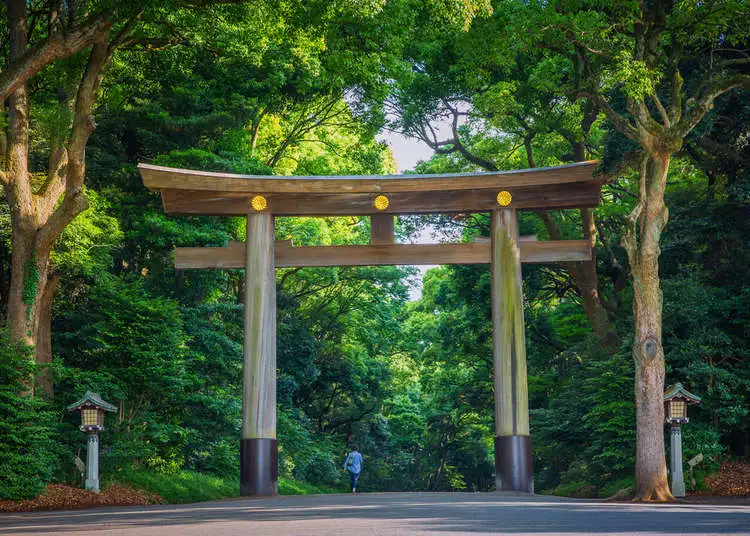
Dedicated to the deified spirits of Emperor Meiji and his consort, Empress Shoken, Meiji Jingu is a peaceful oasis nestled within a sprawling evergreen forest, offering a profound sense of calm amidst the urban bustle. Emperor Meiji (1852-1912) was instrumental in modernizing Japan, and the shrine was established in 1920 to commemorate his and the Empress’s virtues.
What to Do:
-
Forest Walk: The approach to the shrine is as much a part of the experience as the shrine itself. A wide gravel path winds through a dense forest of approximately 100,000 trees, donated from all over Japan. The towering trees effectively muffle the city noise, creating a tranquil ambiance.
-
Massive Torii Gates: Pass under several enormous wooden torii gates. The largest one, near the entrance, is one of Japan’s biggest, made from 1,500-year-old cypress. These gates mark the transition from the profane to the sacred.
-
Sake and Wine Barrels: Along the main path, you’ll encounter impressive displays of decorative sake barrels (kazaridaru) offered by breweries across Japan, and opposite them, barrels of Burgundy wine from France, a nod to Emperor Meiji’s embrace of Western culture.
-
Shrine Buildings: The shrine complex itself is an elegant example of traditional Nagare-zukuri Shinto architecture, characterized by its use of Japanese cypress and copper roofing. The atmosphere is one of understated reverence. Visitors can offer prayers, purchase charms (omamori), or write wishes on ema (wooden plaques).
-
Meiji Jingu Inner Garden (Gyoen): For a small fee, explore the beautiful Inner Garden, which Empress Shoken frequently visited. It’s particularly famous for its iris garden, which blooms stunningly in June.
-
Possible Traditional Weddings: Weekends often see traditional Shinto wedding processions, offering a glimpse into another aspect of Japanese culture.
Why it’s Top 10: Meiji Jingu offers a powerful spiritual retreat and a connection to Japan’s imperial history. Its serene forest and dignified architecture provide a much-needed counterpoint to Tokyo’s high-energy districts, showcasing the city’s respect for nature and tradition.
4. Indulge Your Senses at Tsukiji Outer Market (and consider Toyosu Fish Market for Auctions)
While the famous inner market’s tuna auction moved to Toyosu Fish Market in 2018, the Tsukiji Outer Market remains a vibrant and unmissable culinary destination. It’s a labyrinthine network of narrow streets packed with food stalls, small restaurants, and shops selling fresh seafood, produce, kitchenware, and more.
What to Do at Tsukiji Outer Market:
-
Street Food Grazing: This is the primary allure. Sample an incredible array of fresh seafood: grilled scallops and oysters, tamagoyaki (rolled omelet, often slightly sweet), sea urchin (uni), fatty tuna (toro) skewers, fish cakes (kamaboko), and more. Don’t miss the mochi (rice cakes) in various forms.
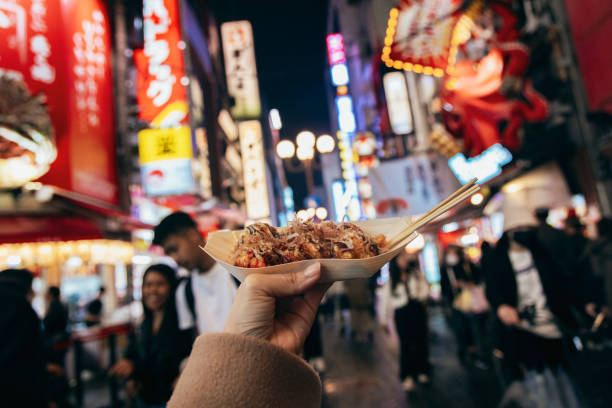
The bustling city streets serve as the backdrop, filled with vibrant shops, colorful signage, and a multitude of people moving about. The sounds of chatter and street performers create an energetic atmosphere.
-
Sushi Breakfast/Lunch: Many small, high-quality sushi restaurants here serve incredibly fresh fish, often sourced directly from Toyosu. Be prepared for queues at popular spots.
-
Shop for Kitchenware and Ingredients: Find high-quality Japanese knives, ceramics, tea, dried seaweed, bonito flakes, and other culinary essentials.
-
Soak in the Atmosphere: Even if you’re not a die-hard foodie, the energy, the smells, and the sights of Tsukiji Outer Market are captivating. It’s a living, breathing part of Tokyo’s food culture.
For the Tuna Auction (Toyosu Fish Market):
-
Book in Advance: To witness the pre-dawn tuna auction, you generally need to apply for a spot on the observation deck via an online lottery system well in advance.
-
Early Start: The auction happens very early (around 5:30 AM – 6:30 AM).
-
Observation Decks: Toyosu is a modern, enclosed facility. There are designated viewing platforms for the tuna, seafood, and fruit/vegetable auctions.
-
Restaurants: Toyosu also has a restaurant area with many famous sushi establishments that relocated from Tsukiji.
Why it’s Top 10: Tsukiji Outer Market is a food lover’s paradise, offering an unparalleled opportunity to sample fresh, authentic Japanese cuisine in a lively, traditional market setting. It’s a feast for all senses and a deep dive into Japan’s rich seafood culture. Toyosu offers the modern continuation of the famed auction.
5. Dive into Otaku Culture in Akihabara (“Electric Town”)
Akihabara, or “Akiba,” is the undisputed global epicenter of otaku (geek) culture. Once famous for its electronics stores, it has transformed into a dazzling mecca for anime, manga, video games, J-pop idols, and all things quirky and niche. Brightly lit multi-story buildings are plastered with anime characters, and the streets thrum with a unique energy.
What to Do:
-
Anime & Manga Stores: Explore multi-floor emporiums like Animate, Mandarake, and Gamers, packed with manga volumes, anime DVDs/Blu-rays, character figurines, art books, and a vast array of related merchandise.
-
Electronics Shopping: While diminished, major electronics retailers like Yodobashi Camera and Bic Camera still have massive flagship stores here, offering everything from the latest gadgets to household appliances. Smaller, specialized shops for electronic components can still be found in the backstreets.
-
Arcades (Game Centers): Spend some time (and yen) in towering arcades like Taito Station or Sega. Experience rhythm games, fighting games, crane games (UFO catchers), and immersive virtual reality experiences.
-
Maid Cafés: For a uniquely Akihabara experience, visit a maid café. Here, waitresses dressed in elaborate maid costumes serve food and drinks, engage in playful banter, and sometimes perform songs or play games with customers. It’s a curious and often lighthearted subculture.
-
Themed Cafés: Beyond maid cafés, Akihabara hosts other themed cafés, such as those dedicated to specific anime series or animal cafés (e.g., owl or cat cafés).
-
Gachapon Halls: Discover entire stores filled with gachapon (capsule toy) machines, offering an incredible variety of miniature collectibles.
Why it’s Top 10: Akihabara offers a fascinating and vibrant glimpse into Japan’s unique pop culture phenomena. It’s a sensory overload in the best way possible, a playground for enthusiasts, and an eye-opening experience for the curious.
6. Experience Contrasting Youth Cultures in Harajuku: Takeshita Street & Omotesando
Harajuku is synonymous with Japanese youth fashion and culture, but it offers two distinct experiences within close proximity: the hyper-kawaii chaos of Takeshita Street and the sophisticated chic of Omotesando.
Takeshita Street:
-
Epicenter of “Kawaii”: This narrow, pedestrian-only street is a riot of color, sound, and extreme fashion. It’s where you’ll find shops selling everything from Lolita and gothic punk attire to colorful wigs, quirky accessories, and idol merchandise.
-
Street Food Delights: Famous for its photogenic and delicious crepes (both sweet and savory), giant rainbow cotton candy, Takoyaki (octopus balls), and creatively flavored soft-serve ice cream.
-
People-Watching: Takeshita Street is one of the best places in Tokyo for people-watching, especially on weekends when young people showcase their unique and often elaborate street styles.
-
Daiso Harajuku: A large 100-yen shop offering a vast array of affordable souvenirs, snacks, and household goods.
Omotesando:
-
“Tokyo’s Champs-Élysées”: Just a short walk from Takeshita Street, Omotesando is a broad, tree-lined avenue known for its upscale boutiques, flagship stores of international fashion brands (Prada, Dior, Louis Vuitton), and striking contemporary architecture.
-
Architectural Marvels: Admire buildings designed by renowned architects, such as the Prada building by Herzog & de Meuron and the Tod’s building by Toyo Ito.
-
Kiddy Land: A multi-story toy store beloved by children and adults alike, featuring characters like Hello Kitty, Rilakkuma, and Studio Ghibli merchandise.
-
Ota Memorial Museum of Art: For a dose of culture, visit this small museum specializing in ukiyo-e (woodblock prints).
-
Trendy Cafés and Restaurants: Omotesando is dotted with stylish cafés and high-end restaurants, perfect for a sophisticated break.
Why it’s Top 10: Harajuku showcases the dynamic spectrum of Tokyo’s youth culture, from the playful and eccentric to the fashion-forward and sophisticated. It’s a visual feast and a fascinating insight into contemporary Japanese trends.
7. Escape to Nature at Shinjuku Gyoen National Garden
One of Tokyo’s largest and most beautiful parks, Shinjuku Gyoen National Garden is a meticulously landscaped oasis offering a tranquil escape from the relentless energy of the surrounding city. Originally an imperial garden, it was opened to the public after World War II.
What to Do:
-
Explore Three Distinct Garden Styles:
-
Japanese Traditional Garden: Features large ponds dotted with islands and bridges, meticulously pruned trees, traditional teahouses (including one where you can experience a tea ceremony), and pavilions. The Kyu Goryotei (Taiwan Pavilion) is a highlight.
-
English Landscape Garden: Characterized by wide, open lawns, gently undulating terrain, and towering cherry trees, making it a prime spot for hanami (cherry blossom viewing) in spring.
-
French Formal Garden: Symmetrical design with rose beds, plane tree avenues, and a more structured, geometric layout.
-
-
Greenhouse: Discover a variety of tropical and subtropical plants in the large, well-maintained greenhouse, which includes sections for orchids, aquatic plants, and even a small waterfall.
-
Seasonal Beauty: Shinjuku Gyoen is stunning year-round. Cherry blossoms in spring (late March to April) are a major draw, followed by lush greenery in summer, vibrant autumn colors (mid-November to mid-December), and serene winter landscapes.
-
Relax and Picnic: The expansive lawns are perfect for relaxing, reading a book, or enjoying a picnic (alcohol is prohibited).
Why it’s Top 10: Shinjuku Gyoen is a masterpiece of landscape design, offering diverse botanical beauty and a much-needed sanctuary within the city. Its ability to transport visitors to different worlds within its gates makes it a truly special place.
8. Soar to New Heights at Tokyo Skytree
For breathtaking panoramic views of the Tokyo metropolis and beyond, a visit to the Tokyo Skytree is a must. Standing at 634 meters (2,080 feet), it’s the tallest freestanding broadcasting tower in the world and Japan’s tallest structure. Its height, “6-3-4,” can be read in Japanese as “Mu-sa-shi,” an old name for the region where Tokyo stands.
What to Do:
-
Tembo Deck (350m): The main observation deck, located at 350 meters, offers stunning 360-degree views through large glass panels. On clear days, you can see as far as Mount Fuji. It features a glass floor section for a thrilling look down, a café, and souvenir shops.
-
Tembo Galleria (450m): For an even higher perspective, take another elevator to the Tembo Galleria at 450 meters. This sloping spiral ramp winds its way up to Sorakara Point, the highest accessible point at 451.2 meters, creating a sensation of walking in the sky.
-
Tokyo Solamachi: At the base of the Skytree is Tokyo Solamachi, a large shopping and entertainment complex with over 300 shops and restaurants, an aquarium (Sumida Aquarium), and a planetarium. You can easily spend several hours here.
-
Night Views: The views are spectacular both day and night. The glittering expanse of Tokyo at night is an unforgettable sight.
-
Consider Alternatives: While Skytree is the tallest, the classic Tokyo Tower (333m) offers a different, more central perspective and a retro charm. The Tokyo Metropolitan Government Building in Shinjuku also has free observation decks.
Why it’s Top 10: The sheer scale of Tokyo can only be truly appreciated from above. Tokyo Skytree offers the most expansive and awe-inspiring vistas, providing a modern marvel experience and an unforgettable perspective on this vast urban landscape.
9. Immerse Yourself in Digital Art at teamLab Borderless or Planets
For a truly unique and contemporary Tokyo experience, step into the mesmerizing world of teamLab. This international art collective creates stunning, immersive digital art installations that blur the lines between art, technology, and the viewer. Tokyo hosts two major teamLab permanent exhibitions: teamLab Borderless (relocating to Azabudai Hills, opening February 9, 2024) and teamLab Planets TOYOSU (open until end of 2027).
teamLab Borderless (Azabudai Hills):
-
A World Without Boundaries: True to its name, Borderless features artworks that move out of rooms, communicate with other works, and sometimes intermingle. There are no maps, encouraging visitors to wander and discover.
-
Interactive Art: Many installations react to human presence and touch, making each visit unique. Explore flowing waterfalls, digital forests, and seas of projected flowers that bloom and scatter.
-
EN TEA HOUSE: Enjoy a cup of tea where digital flowers bloom within your teacup.
teamLab Planets TOYOSU:
-
Body Immersive: This experience is more focused on immersing your entire body into the artworks. You’ll walk barefoot through water, navigate rooms filled with light crystals, and lie down beneath floating digital flowers.
-
Sensory Journey: It’s a tactile and highly photogenic experience, designed to stimulate multiple senses. Be prepared for areas with water (up to knee-deep in one section) and mirrored floors (wearing shorts or pants is recommended).
What to Expect:
-
Book Tickets in Advance: Both are incredibly popular and tickets often sell out, especially on weekends. Booking online well ahead of your visit is crucial.
-
Allow Ample Time: You can easily spend 2-4 hours exploring.
-
Highly Instagrammable: These are some of the most photogenic spots in Tokyo.
Why it’s Top 10: teamLab exhibitions represent the cutting edge of art and technology, offering an innovative and unforgettable sensory experience that is distinctly “Tokyo.” It’s a futuristic playground that challenges perceptions and delights visitors of all ages.
10. Explore Shinjuku’s Diverse Neighborhoods: Skyscrapers, Golden Gai & Omoide Yokocho
Shinjuku is a city within a city, a vast ward that encapsulates Tokyo’s multifaceted personality. From towering skyscrapers and bustling department stores to nostalgic alleyways and serene gardens, Shinjuku has it all.
What to Do:
-
Tokyo Metropolitan Government Building: Head to the free observation decks on the 45th floor of these twin towers (202 meters high) for fantastic panoramic views, including Mount Fuji on clear days. It’s a great alternative to paid observation decks.
-
Shinjuku Gyoen National Garden: (Already detailed as point #7, but it’s a key Shinjuku highlight).
-
Golden Gai: Step back into Showa-era Tokyo in Golden Gai, a network of six narrow alleys crammed with over 200 tiny, atmospheric bars and eateries. Most seat only a handful of customers, creating an intimate and unique drinking experience. Some have cover charges or are members-only, but many are welcoming to tourists.
-
Omoide Yokocho (“Memory Lane” or “Piss Alley”): Another nostalgic lane, this one filled with small yakitori (grilled chicken skewers) restaurants and izakayas (Japanese pubs). The air is thick with the smoke from grills, and the atmosphere is lively and convivial.
-
Kabukicho: Tokyo’s largest and most infamous red-light district, but also a major entertainment hub with countless restaurants, bars, cinemas, and the quirky Robot Restaurant (currently undergoing renewal). While generally safe to walk through, exercise common sense, especially at night, and be wary of touts.
-
Shinjuku Shopping: Explore massive department stores like Isetan (known for its incredible food hall), Takashimaya, and Odakyu, as well as electronics giants like Bic Camera and Yodobashi Camera.
Why it’s Top 10: Shinjuku is the ultimate microcosm of Tokyo, offering a dizzying array of experiences within one ward. From the heights of its modern skyscrapers to the gritty charm of its historic alleyways, it showcases the city’s incredible diversity and constant evolution.
Tokyo is a city that constantly reinvents itself while cherishing its past. This list merely scratches the surface of what this incredible metropolis has to offer, but these ten experiences provide a robust and varied introduction to its unique character. Whether you’re captivated by ancient traditions, futuristic innovations, culinary delights, or vibrant pop culture, Tokyo promises an adventure that will stimulate your senses and leave you with memories to last a lifetime. So, pack your curiosity, embrace the delightful contrasts, and prepare to fall in love with the endless wonders of Tokyo.
